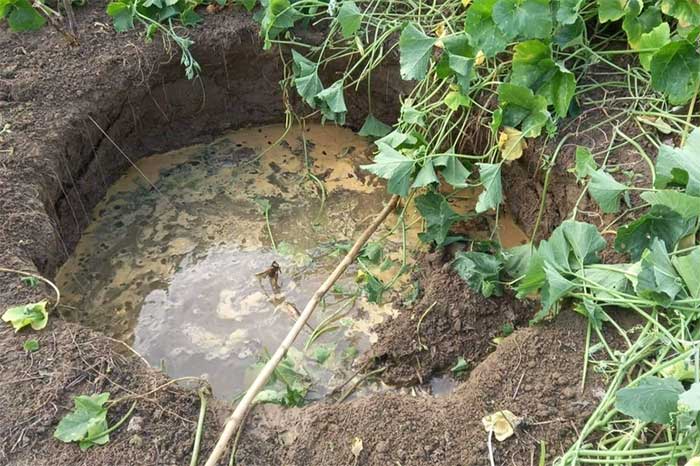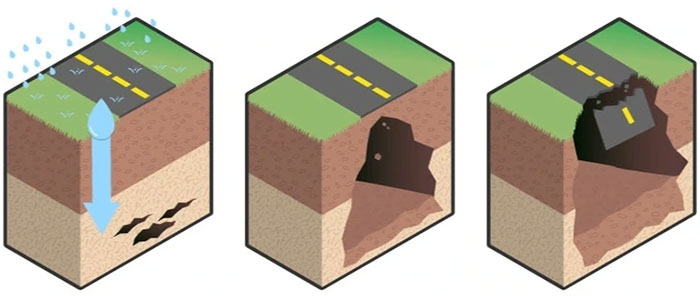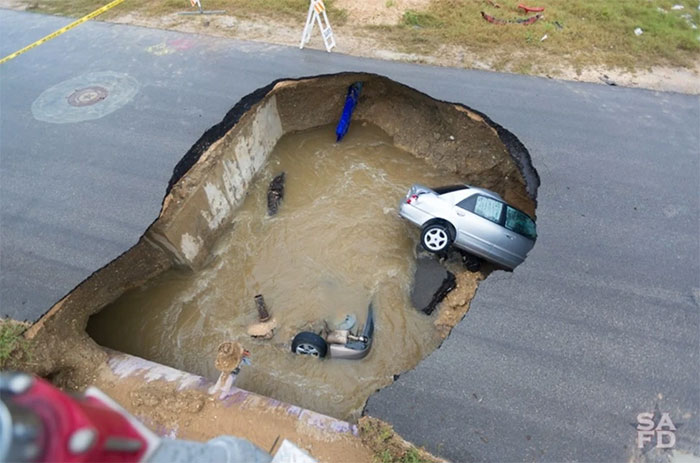Recently, several deep sinkholes have emerged sporadically in Nghe An province, causing panic among local residents. The frightening aspect is that there are no warning signals when these phenomena occur.

A new sinkhole appeared on May 24 in Chau Hong commune (Photo: Vi Tinh).
In just a few days, three sinkholes have appeared in various hamlets in Chau Hong commune, Quy Hop district, Nghe An. On May 25, Mr. Truong Van Hoa, Chairman of the People’s Committee of Chau Hong commune, reported that three more sinkholes had been discovered in three different hamlets.
“Previously, small sinkholes appeared occasionally, but over the past week, this phenomenon has become more frequent, causing great concern among the residents,” Mr. Hoa said.
To clarify the cause of these sinkholes, the Quy Hop district People’s Committee has hired the North Central Geological Federation to conduct a survey and find solutions.
Scientific Explanation for the Occurrence of Sinkholes

The formation of sinkholes is often due to cavities beneath the ground surface becoming too large, leading to the soil above collapsing (Graphic: Geosciences).
According to Jerry Black, a geologist at the Geo Hazards organization based in Florida, USA, sinkholes are partly formed by natural processes but are also influenced by human development.
“In Florida, groundwater is the primary water source for all cities. However, excessive pumping and withdrawal of groundwater contributes to the formation of natural sinkholes,” Black stated.
A report from the United States Geological Survey (USGS) indicates that sinkholes typically occur above geological systems consisting of limestone, carbonate rocks, salt, or other types of soluble rock.
As groundwater or rainwater seeps into the ground, it dissolves these rocks, creating cavities beneath the surface. Over time, the space beneath the ground becomes too large, causing the soil above to collapse, taking with it structures or objects above, such as roads, houses, and vehicles.
According to the USGS, these sinkholes can vary in depth from 3 to 30 meters, depending on the severity of the subsidence.
How to Identify Sinkholes?

A sinkhole in San Antonio, Texas (USA) causing multiple vehicle accidents (Photo: CNBC).
According to geological experts, most sinkholes are distinct natural events that develop gradually over time. However, experts warn that many sinkholes have been recorded swallowing homes, vehicles, and even burying unfortunate individuals standing on the affected area.
The alarming fact is that there are no warning signals when a sinkhole occurs. Sometimes, they happen at night when most people are sound asleep.
Some studies suggest that sinkholes tend to occur seasonally, similar to “tornado season” and “hurricane season.”
This is concluded because the primary cause of sinkholes is water, which typically occurs when there is either too much or too little. For instance, a flood following a drought is an optimal condition for the emergence of natural sinkholes.
There are also arguments that the occurrence of sinkholes is a consequence of poorly planned infrastructure, leading to geological system issues after many years of operation.


















































